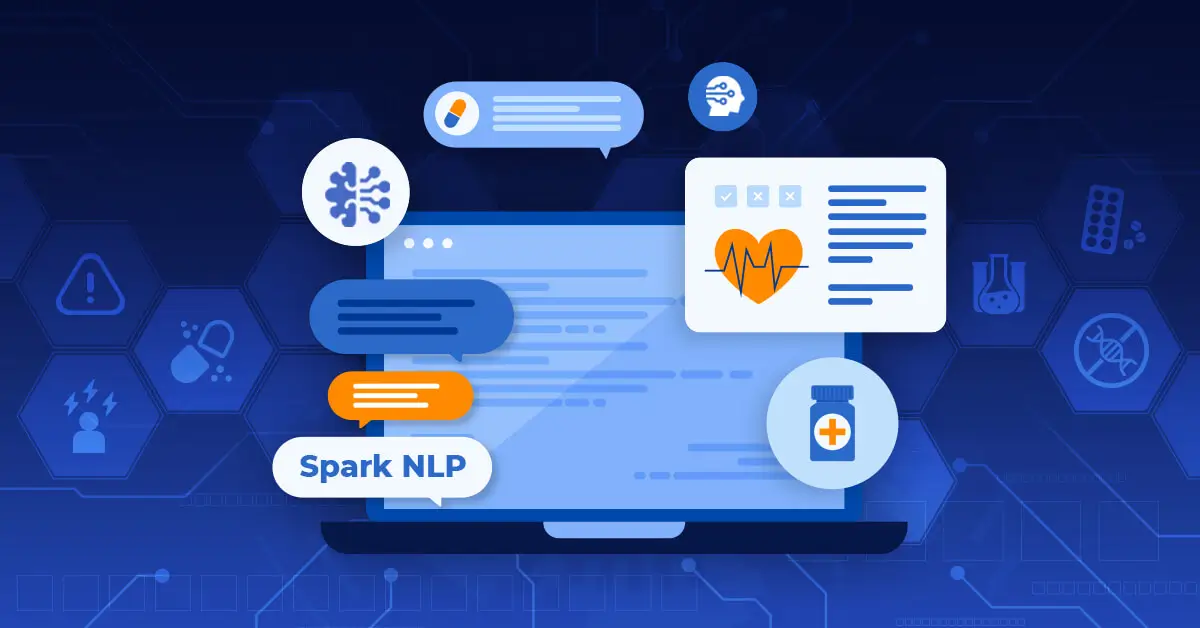Understanding and evaluating patients’ clinical notes is crucial in providing accurate diagnosis and treatment in the field of medicine. Today, issues like opioid abuse and addiction pose significant challenges for medical professionals.
In this blog post, we will explore an approach using the powerful capabilities of natural language processing in healthcare to detect opioid abuse in clinical notes.

Why opioid abuse detection of a patient is a crucial task?
Detecting opioid abuse in clinical notes is crucial for several reasons:
- Patient Safety: Identifying cases of opioid abuse in clinical notes is essential for ensuring the safety and well-being of patients. Opioid abuse can lead to serious health consequences, including addiction, overdose, and even death. By detecting and addressing opioid abuse, healthcare providers can intervene early, provide appropriate support, and prevent further harm to the patient.
- Accurate Diagnosis and Treatment: Opioid abuse can have a significant impact on a patient’s health and may complicate their medical condition. Detecting opioid abuse in clinical notes enables healthcare professionals to obtain a deeper insight into the patient’s medical background, leading to more precise diagnoses. This knowledge plays a critical role in formulating tailored treatment plans that effectively address both the patient’s medical conditions and their opioid abuse.
- Medication Management: Opioid abuse often involves the misuse or diversion of prescription opioids. Through the identification of opioid abuse within clinical notes, healthcare providers can closely monitor and manage the patient’s medication regimen. This includes adjusting dosages, considering alternative pain management strategies, or implementing controlled substance agreements to prevent the misuse of opioids and ensure responsible medication use.
- Referral to Specialized Services: Opioid abuse is a complex issue that often requires specialized interventions and support. By uncovering instances of opioid abuse documented in medical records, healthcare providers can refer patients to addiction specialists, counselors, or rehabilitation programs. Early identification allows for timely intervention and access to appropriate resources, increasing the chances of successful recovery and minimizing the long-term consequences of opioid abuse.
- Public Health Monitoring and Intervention: Tracking cases of opioid abuse through clinical notes provide valuable data for public health monitoring and intervention efforts. It helps identify trends, patterns, and hotspots of opioid abuse within a population or region. This information is crucial for public health authorities to develop targeted prevention programs, implement harm reduction strategies, and allocate resources effectively to address the opioid epidemic at a broader level.
- Cost Management: Opioid abuse can lead to increased healthcare utilization and costs. Insurance companies need to account for the higher medical expenses associated with opioid abuse when setting premiums or managing claims. Identifying opioid abuse allows for appropriate risk assessment and cost estimation, leading to more accurate pricing and cost management strategies.
Utilizing Healthcare NLP to Detect Opioid Abuse in Clinical Notes
Through the identification and intervention of opioid abuse, healthcare providers can make a significant impact on individual patients’ lives and contribute to the broader efforts to combat the opioid epidemic. For detecting opioid entities, we can use Healthcare NLP library that comes with 100+ different NER models and several pretrained pipelines to support clinical entity detection in clinical notes.
Within our pipeline for entity detection, we have the flexibility to incorporate various NER models offered by Healthcare NLP. However, our focus will be on utilizing the ner_sdoh model, which can identify social determinants of health (SDOH) entities including the “substance-related” entities (Substance_Use, Substance_Quantity, Substance_Duration, Substance_Frequency). For our specific use case, we will alter the labels of the identified Substance_Use entities to Opioid_Use.
Furthermore, we will showcase the model’s ability to distinguish between opioid and non-opioid drug entities. For this purpose, we will incorporate the ner_posology_large model, which identifies posological entities with labels such as DOSAGE, DRUG, DURATION, FORM, FREQUENCY, ROUTE and STRENGTH. Given our specific focus on opioid entities, we will selectively whitelist only the DRUG label from this model.
documentAssembler = DocumentAssembler()\
.setInputCol("text")\
.setOutputCol("document")
sentenceDetector = SentenceDetectorDLModel.pretrained("sentence_detector_dl_healthcare","en","clinical/models")\
.setInputCols(["document"])\
.setOutputCol("sentence")
tokenizer = Tokenizer()\
.setInputCols(["sentence"])\
.setOutputCol("token")
word_embeddings = WordEmbeddingsModel.pretrained("embeddings_clinical","en","clinical/models")\
.setInputCols(["sentence","token"])\
.setOutputCol("embeddings")
sdoh_ner = MedicalNerModel.pretrained("ner_sdoh","en","clinical/models")\
.setInputCols(["sentence","token","embeddings"])\
.setOutputCol("sdoh_ner")
sdoh_ner_converter = NerConverterInternal()\
.setInputCols(["sentence","token","sdoh_ner"])\
.setOutputCol("sdoh_ner_chunk")\
.setWhiteList(["Substance_Use"])\
.setReplaceLabels({"Substance_Use":"Opioid_Use"})
posology_ner = MedicalNerModel.pretrained("ner_posology_large","en","clinical/models")\
.setInputCols(["sentence","token","embeddings"])\
.setOutputCol("posology_ner")
posology_ner_converter = NerConverterInternal()\
.setInputCols(["sentence","token","posology_ner"])\
.setOutputCol("posology_ner_chunk")\
.setWhiteList(["DRUG"])
opioid_pipeline = Pipeline(
stages=[
documentAssembler,
sentenceDetector,
tokenizer,
word_embeddings,
sdoh_ner,
sdoh_ner_converter,
posology_ner,
posology_ner_converter
])
empty_data = spark.createDataFrame([[""]]).toDF("text")
opioid_model = opioid_pipeline.fit(empty_data)
opioid_lmodel = LightPipeline(opioid_model)
In the pipeline above, we created a LightPipeline for getting faster results on the small data, also we can visualize the LightPipeline results by using Healthcare NLP Display library.
Let’s check the results of the pipeline on a sample text that also contains an opioid (oxycodone) and a drug entity (Ibuprofen).
from sparknlp_display import NerVisualizer sample_text = """John, a 25-year-old college student, began experimenting with oxycodone after a sports injury left him with chronic pain. At first, he followed his doctor's prescription and taking the medication as directed. However, as time went on, he found himself needing higher doses to achieve the same pain relief. Seeking alternative options, his doctor introduced him to physical therapy sessions in addition to prescribing Ibuprofen to help manage his pain.""" result = substance_lmodel.fullAnnotate(sample_text) visualiser = NerVisualizer() # visualize drug entities visualiser.display(result[0], label_col='posology_ner_chunk', document_col='document') # visualize opioid entity visualiser.display(result[0], label_col='sdoh_ner_chunk', document_col='document')
Let’s check the results of ner_posology_large model:

Visualization of extracted DRUG entities
The ner_posology_large model recognized both oxycodone and Ibuprofen entities as DRUG without distinguishing between opioids and other drugs. Now, let’s proceed to visualize the outputs of the ner_sdoh model.

Visualization of extracted OPIOID entities
The outcome of the ner_sdoh model reveals that oxycodone was successfully identified as a Opioid_Use entity, while Ibuprofen was not recognized as such. Conversely, in the results produced by the ner_posology_large model, both of them were classified as DRUG entities. Thus, the model demonstrates its capability to discern whether drug entities are opioids or non-opioids.
Conclusion
In conclusion, detecting opioid abuse in clinical notes is crucial for patient safety, accurate diagnosis, effective treatment, appropriate medication management, referral to specialized services, public health monitoring, and cost management.
Healthcare NLP proves to be a powerful tool for detecting opioid abuse due to its advanced natural language processing capabilities. By analyzing clinical notes, Healthcare NLP for Healthcare can effectively identify and differentiate opioid-related entities, such as Opioid_Use, from other drug entities. Additionally, the integration of specific models like ner_sdoh enables accurate recognition of opioid abuse instances while considering the context of the notes. Furthermore, by incorporating the ner_posology_large model, Healthcare NLP expands its capability to extract posological information associated with opioids. This comprehensive approach enhances the ability to detect and monitor opioid abuse in clinical settings, enabling healthcare providers to intervene early, provide appropriate support, and contribute to combating the opioid epidemic. With Healthcare NLP’s robust features and customizable pipeline, healthcare professionals can significantly improve patient care, optimize treatment strategies, and contribute to better population health outcomes in the face of opioid abuse.
Healthcare NLP models are licensed, so if you want to use these models, you can watch “Get a Free License For John Snow Labs NLP Libraries” video and request one from https://www.johnsnowlabs.com/install/.
You can follow us on Medium and LinkedIn to get further updates or join Slack support channel to get instant technical support from the developers of Healthcare NLP. If you want to learn more about the library and start coding right away, please check our certification training notebooks.






























